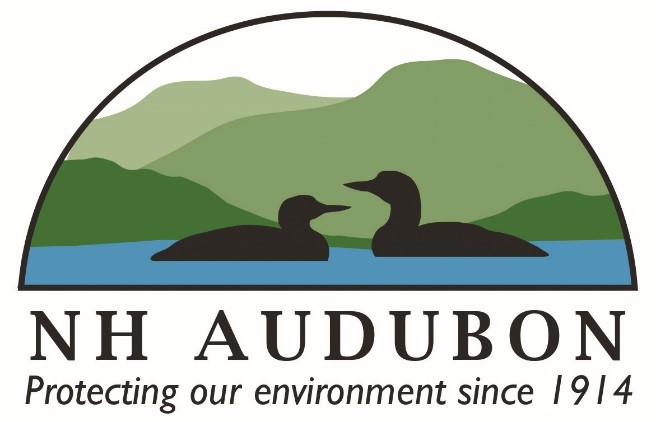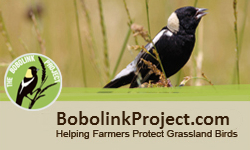For Farmers
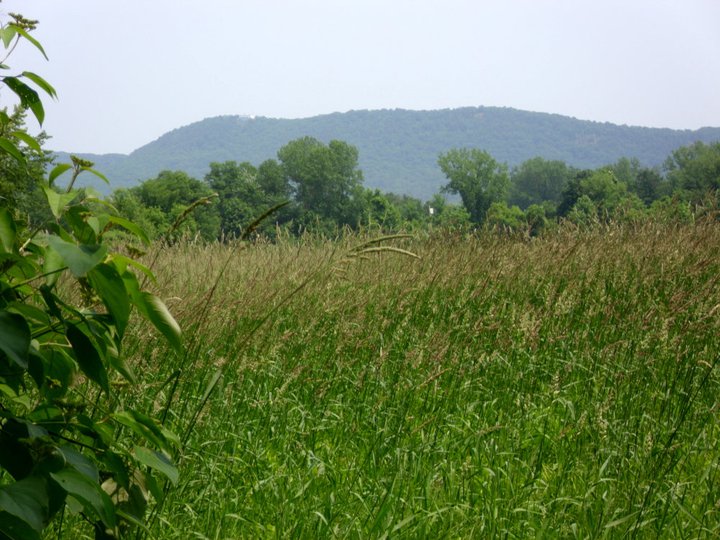
How to Participate
The application period for the 2025 ended on Monday, March 31. Thank you to all who applied. We will notify farmers who are accepted April 15.
Because some of the criteria we use in selecting participating farms may vary slightly from year-to-year, any interested farmers should sign up for the e-newsletter (see Subscribe to project updates in the right rail). That way, when the criteria that will be used in 2026 are finalized, including deadlines for submission of applications, you'll be automatically notified.
Haying Timelines
Choose between two timelines that allow Bobolinks and other grassland species to fledge from actively managed fields.
Delayed First Cut: No disturbance in the field until July 15th.
The delayed first cut timeline is recommended for most farmers and landowners, particularly those with nesting Eastern Meadowlarks.
Delayed Second Cut: No disturbance in the field between May 20 and July 24th.
The delayed second cut timeline allows farmers and landowners to take an early cut in May before Bobolinks begin nesting, and then delays the second cut for 65 days, which is enough time for them to renest and fledge their young. This timeline can be used to manage fields that have invasive species, as it “resets” the field before plant species of concern go to seed.
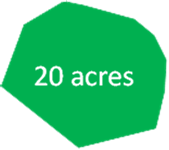 Field Vetting and Prioritization
Field Vetting and Prioritization
What criteria are used to select fields for enrollment?
To be eligible for the program, fields must be at least 20 acres and have nesting Bobolinks . However, some fields are more valuable for nesting grassland birds than others, so the process of enrolling Bobolink Project fields continues by ranking fields offered by farmers based on biological suitability for nesting grassland birds. Each eligible field will receive a habitat score, which will then be weighed with their bid price so we can protect the greatest amount of high -value habitat with our available funds. Metrics that will be used to rank the eligible fields are acreage and shape, surrounding landscape openness, the presence of other grassland species, field quality (vegetation composition), and presence of invasive species.
Acreage
Fields have to have at least 20 acres of continuous grassland. As field size increases, the abundance and diversity of grassland species increases as well. Twenty acres is typically recognized as the minimum acreage that can reliably support Bobolink populations. Fields that are over 50 acres will have higher Bobolink abundances, and fields over 75 acres in size may have Eastern Meadowlarks. Note that the field size is based on acres of grassland; hence, a 20-acre farm that includes 2 acres of row crops plus farm buildings would not be considered as a potential Bobolink Project farm. Farmers who have been previously accepted into The Bobolink Project with bids of less than 20 acres and who have had Bobolinks on their submitted fields will still be considered.
Surrounding Landscape
Fields that are in a landscape with other nearby fields are preferred over fields that are mostly surrounded by forest or suburban development. While isolated fields (especially large ones) are sometimes occupied by grassland birds, fields that occur in landscapes where there are other fields are generally preferred. We define ‘openness’ as how visually open a habitat appears. In other words, if you are standing in your field, how far can you see the horizon at the eye level. Recent research has found that openness within a 2.5km radius of a field increases the probability of Bobolinks and Eastern Meadowlarks to use a field .
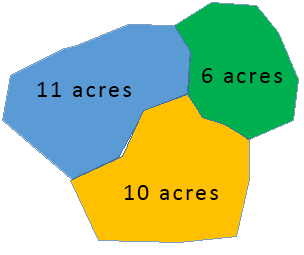
There may be circumstances where neighboring farmers may want to identify a shared area to submit for inclusion in The Bobolink Project. In the example to the right, farms Blue, Orange, and Green are, on their own, below The Bobolink Project's acreage requirement (11 acres, 10 acres, and 6 acres respectively). However, if these three farmers submitted a joint bid, totaling 27 acres, all three farms would be eligible for inclusion in The Bobolink Project. Under these circumstances, a single bid would be submitted, but the landowners would each be paid for their respective acreage. If each landowner needs varying levels of compensation per acre to be able to participate, please reach out to the Bobolink Project coordinators at [email protected].
Presence of Grassland Species
New fields that apply to the program should currently support Bobolink populations, which will be confirmed through eBird records, landowner confirmation, or referrals from volunteers, partners, and local birding groups. Our team members will visit fields each year during the breeding season to count the number of females in each field, which will help us to estimate each field’s breeding population and track changes over time. If Bobolinks are not present in a field for two consecutive years, the field will be ineligible for the program until the habitat improves.
Shape
Fields that are square, circular, or ovular in shape (green) are preferred over fields shaped as rectangles (red), complex shapes with lots of "edge" (yellow), or fields that are separated from each other by hedgerows or large roads (blue - suitability depends on nature of the barrier fragmenting the fields). Edge habitats (including tree lines that cut into fields) can expose grassland birds to a variety of predators, so grassland birds tend to avoid long and narrow fields. Field such as these will generally not be considered for inclusion in The Bobolink Project, but if they are large enough, we can accept the portion of the field that meets our criteria.
Field Management
Bobolinks and Eastern Meadowlarks require large, grass-dominated fields, which do not typically persist in the New England landscape without intensive management. The fertilization and cutting regimes that farmers use maintain the ideal vegetation composition for nesting grassland species. We have noticed that when cutting is delayed into late summer and early fall on the same field for more than five years, the forage quality and grassland bird abundance declines. This creates a downward spiral, where it is harder and harder to find someone to hay the field, which leads to later and later cuts. Our mission to sustain and improve grassland habitat is only possible when farmers and landowners continue to invest in their fields to maintain their quality, ideally as part of their agricultural activities. As a result, we recommend that fields continue to be fertilized organically and hayed as early as possible after the no-disturbance period ends. We expect that your bid price should reflect the cost of incorporating grassland bird breeding windows into your field management practices.
Bidding Process
In the past, the program used a reverse-bid fixed price model to determine the compensation rate (dollars per acre) for program participants. Bids were accepted in the order of lowest rate to highest, but as each new bid was accepted, everyone’s compensation rate increased to match. This resulted in each participant receiving the same payment rate (dollars per acre enrolled) from the program but meant that some received more than required while those with higher financial needs were excluded. To include as many different farmers and landowners as possible, we are removing the fixed price model in 2025. We encourage all applicants to determine the true cost of incorporating one of our two recommended timelines into your management plans, and submit your bids accordingly. The contract will now reflect the per-acre cost that you submit to the program. Instead of admitting fields based on their bid price, we will now admit fields based on their habitat quality to ensure that we can protect the most high-quality grassland acreage possible . Please note that bids must be reasonable. Outlier bids may be skipped over regardless of their quality, to fit within the finances of the project.
Important Considerations
- Your submitted bid should be reasonable, but sufficient to sustainably maintain your fields while adhering to one of our two haying timelines.
- Remember that your bid can focus on a piece of your total farm acreage. If you own a 200-acre farm, you may only be interested in enrolling 20 acres of your property into The Bobolink Project. Your bid, therefore, would cover only that 20-acre portion, not the entire 200 acres.
- If two properties have comparable habitat quality, preference will be given to the one with the lower bid.
- While there is no guarantee of continued enrollment, preference will be given to former Bobolink Project fields that supported Bobolinks or other grassland birds in previous years. Bobolinks have a high degree of nest-site fidelity, meaning that many will return to the same field they used in the prior year. Therefore, if a selected Bobolink Project field had nesting grassland birds in 2022, it is likely that the field will have nesting grassland birds in 2023.
- If you have concerns about the forage quality of a particular field, you can choose to rotate the field in and out of the program. Some sources recommend haying intensively once every three years to prevent the spread of invasive plants that decrease habitat and forage quality. When rotating a field out, you can choose to enroll an adjacent field that supports Bobolinks, as it will protect the ones that spill over from the hayed field. Coordination among neighbors who are enrolled in the program can help to support this model.



